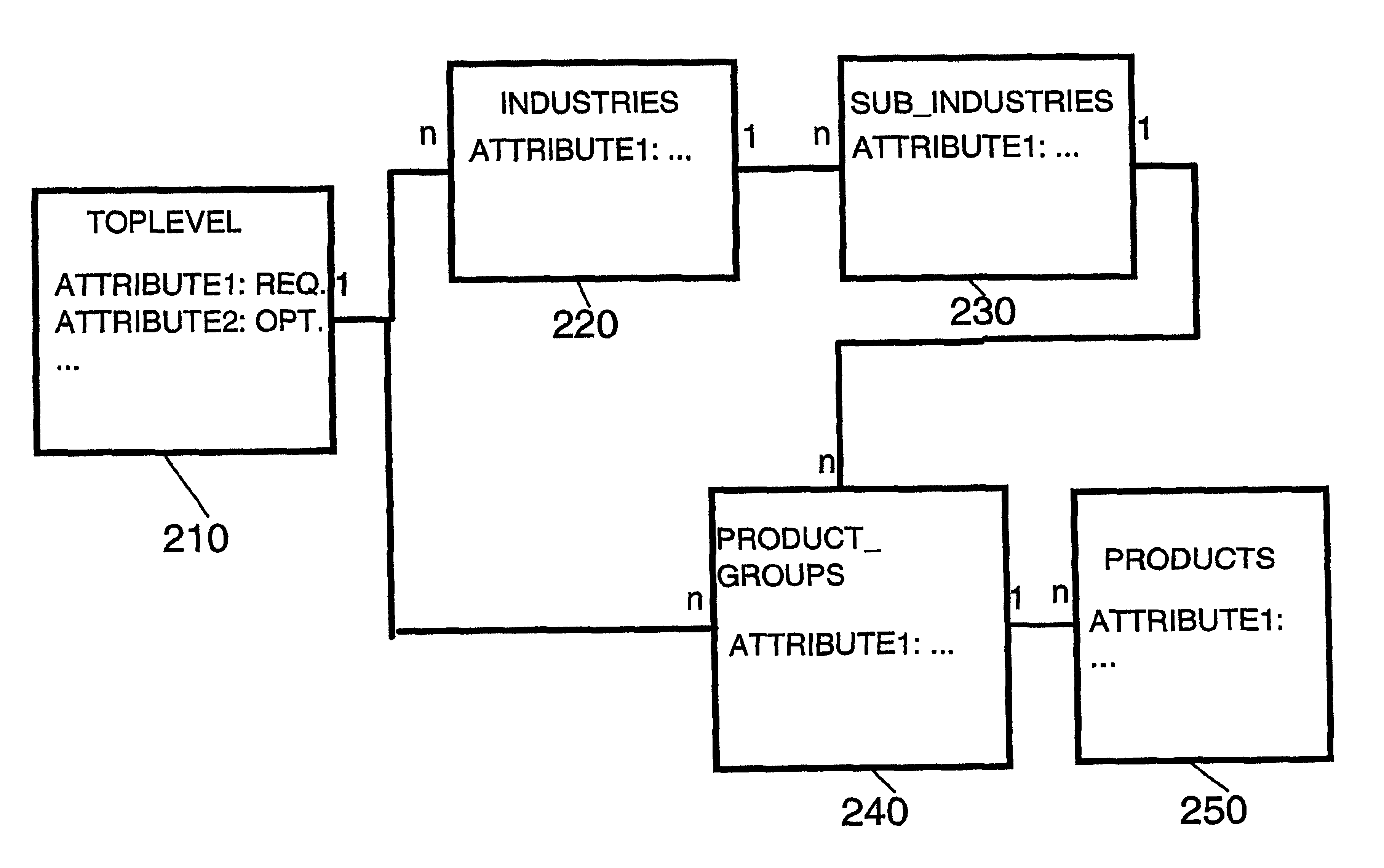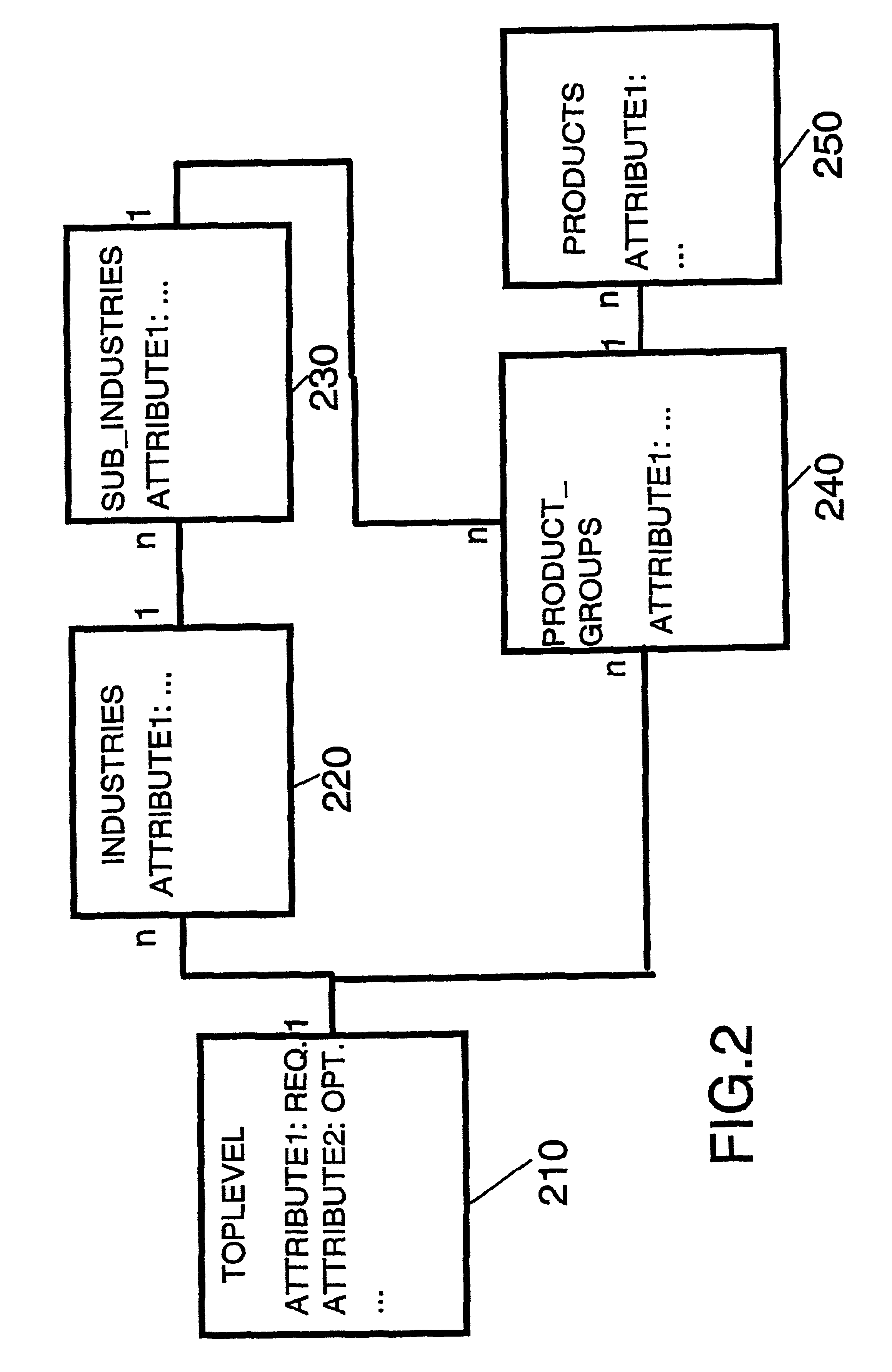Method of structuring a catalog
- Summary
- Abstract
- Description
- Claims
- Application Information
AI Technical Summary
Benefits of technology
Problems solved by technology
Method used
Image
Examples
Embodiment Construction
[0066]With general reference to the figures and with special reference now to FIG. 1 the sample shopsite comprises pages that are grouped together according to the invention in a number of different node types 100, 110, 120, 130, 140, 150, which in here are called structlevels. According to this preferred embodiment of the invention a node type is defined by the levelname, like “industries”, 120 or “product_groups”, 140, etc.
[0067]It should be noted that the names given in here for tables and nodes are tried to be selected such that their semantic significance can be easily interpreted from the name. Case sensitivity within the names is not done strictly throughout the description.
[0068]A node instance 112, 114, or 122, 124, or 132, 134, 136, or 142, 144, or 152 to 158 is then named—within a respective type—by a node (instance) name, like “Automotive”122 or “Inhabitants”144. Catalog nodes of the same type have the same attribute types. E.g. “Products”150, e.g., the node instances “P...
PUM
 Login to View More
Login to View More Abstract
Description
Claims
Application Information
 Login to View More
Login to View More - R&D
- Intellectual Property
- Life Sciences
- Materials
- Tech Scout
- Unparalleled Data Quality
- Higher Quality Content
- 60% Fewer Hallucinations
Browse by: Latest US Patents, China's latest patents, Technical Efficacy Thesaurus, Application Domain, Technology Topic, Popular Technical Reports.
© 2025 PatSnap. All rights reserved.Legal|Privacy policy|Modern Slavery Act Transparency Statement|Sitemap|About US| Contact US: help@patsnap.com



